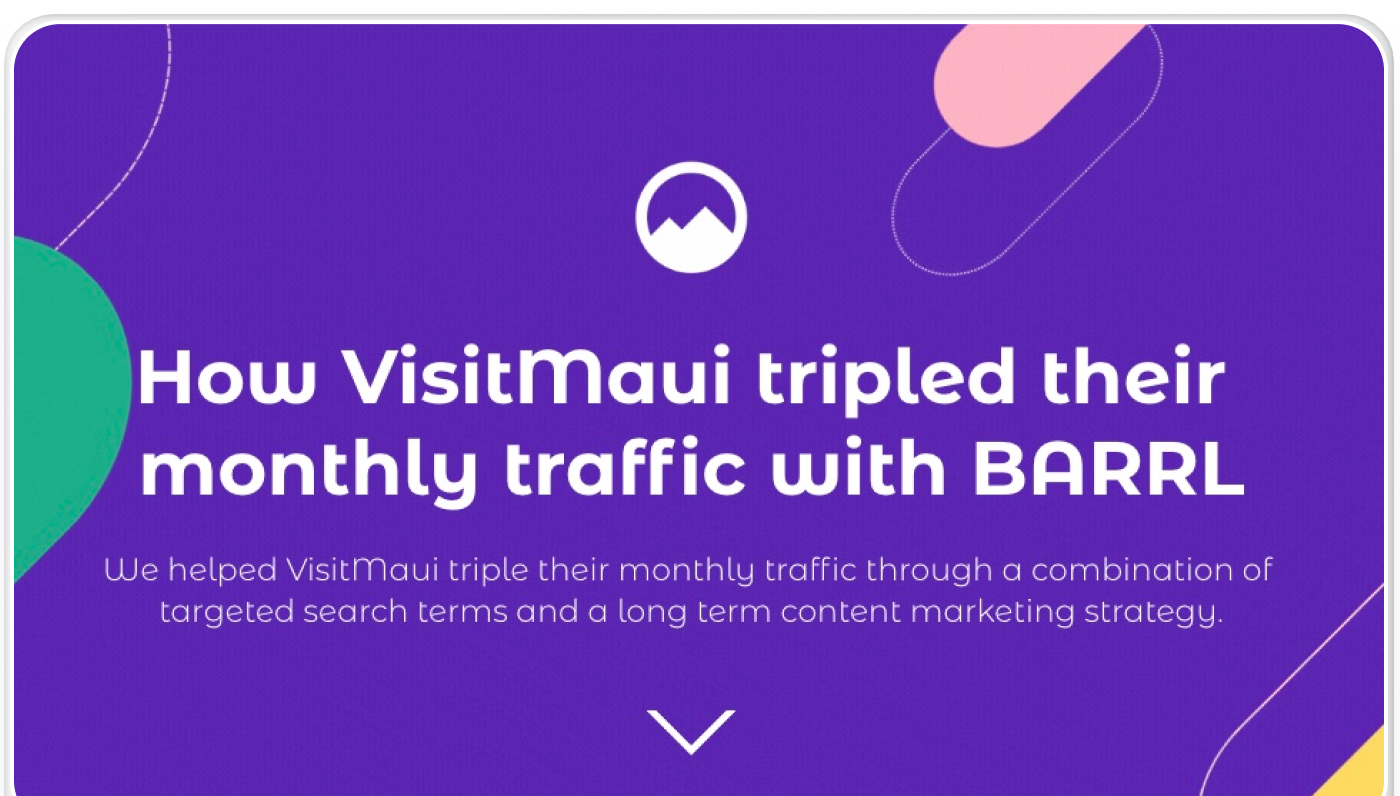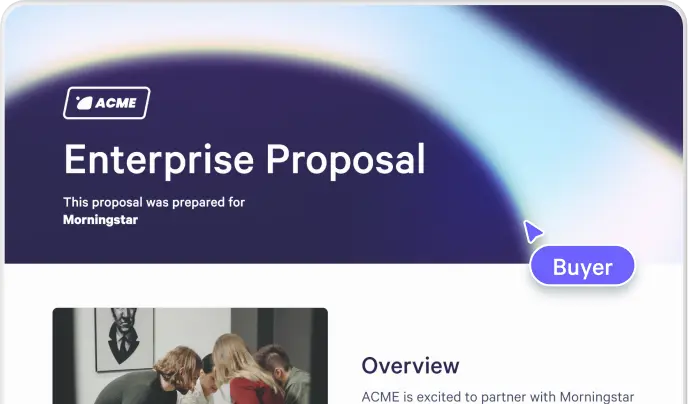
Nothing has more power than an impressive case study to build trust and move a prospect to become a client.
Don’t buy the argument?
Here’s some proof— According to a survey conducted by Uplift Content, nearly 40% of SaaS marketers say that case studies are very effective at boosting sales, and 24% of them would produce more case studies because they drive sales.
A business case study or a customer success story can work wonders across the entire sales funnel. A great case study is the ultimate secret weapon for prospecting, onboarding, nurturing, and upselling. While case studies are well regarded for several reasons, having others tell the story of your business is more impactful than trying to promote your impact yourself. It’s human nature to look for social proof.
Writing case studies that are impressive, convincing, and provide enough context to a business without sounding boastful requires strategic thinking. In this post, we’ll share some of the best practices for writing and designing case studies—ones that turn your prospect’s uncertainty into confidence.
What is a case study?
A case study is a powerful sales tool that takes a deep dive into how your product or service significantly impacted a real customer. It goes beyond just talking about features and benefits as it provides concrete evidence of your product’s capabilities, builds trust with potential customers, and showcases your product’s ability to solve their specific challenges. It brings your product or service to life in a real world context so prospects can see how it’s worked for a similar organization or pick up some tips for how to leverage specific features or benefits.
By sharing success stories through case studies, you demonstrate your expertise and reliability, giving your business the credibility it needs to stand out in the crowd and win over new clients.
The best case studies share a few things—they tell compelling stories to persuade a prospect.
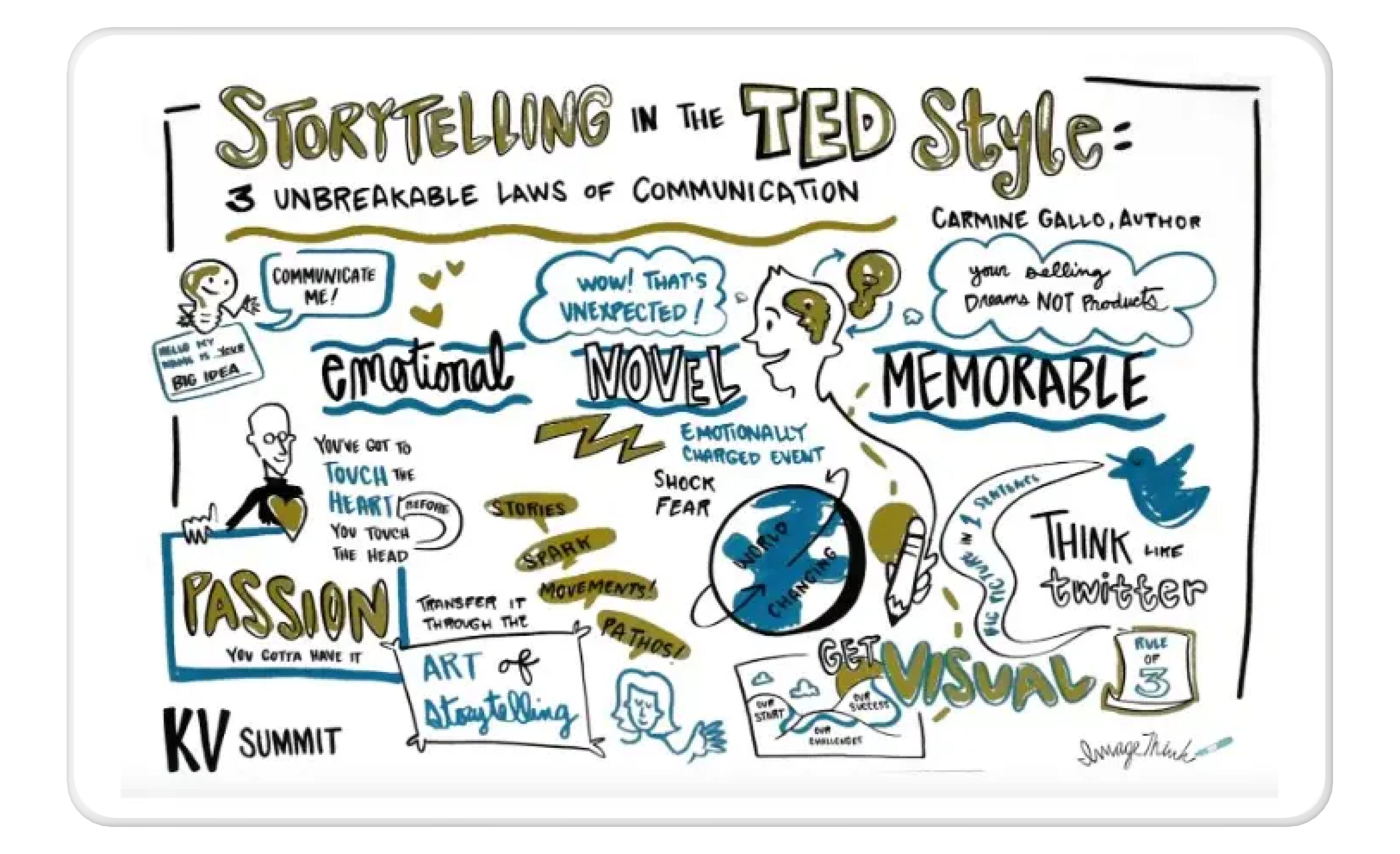
Storytelling is a promising tactic to use in your marketing strategy. By presenting a relatable customer story (your case study) with similar concerns and how they found success with your solution, you dispel doubts and build trust. Finally, good stories humanize your brand.
Ready to get started now? Try our Case Study Template.
How to write a compelling case study
Here at Qwilr, we’ve seen thousands of our customers create case studies as part of their sales strategy to promote their products and services. Some of these case studies have gone on to win millions of dollars of work.
If you’re looking to replicate this success, look no further.
Your case studies should tell the story behind how you achieved results for your clients, the outcomes your prospective customers can expect, and the estimated amount of time it will realistically take to see results. You can also use your case study to provide an idea of your overall process and expected ROI from if they decide to invest in your offering.
So when it comes to your case study structure, here’s what we recommend:
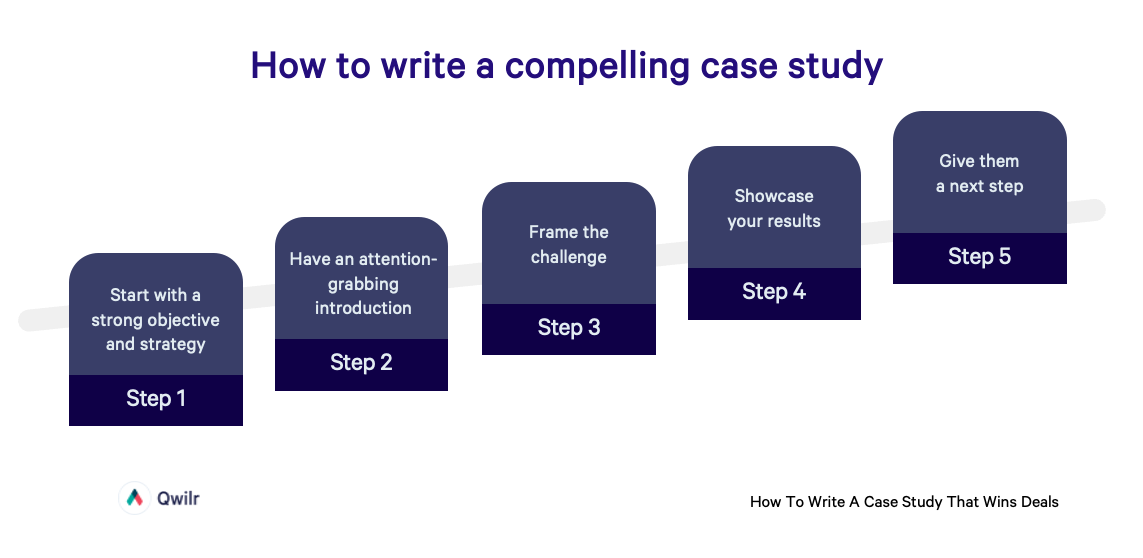
Step 1: Start with a strong objective and strategy
Having a clear goal and strategy in mind gives your case study direction and purpose, making it more impactful and engaging for your audience.
There are a couple of things at play here, namely:
Discovering the most profitable stories for your business
While you could write a case study about any satisfied customer’s experience, you want to be selective about what you choose to allocate resources to. Of course, the case study should be about the customer and what they got out of working with you, but you want to pick stories that help you find more of your ideal customer. Consider choosing the deals that have been the most profitable for your company and the most successful for your customers to highlight.
Identifying the best-suited formats
A lot of businesses don’t give enough emphasis to the format they choose for their case study, but it’s important. Expecting busy decision-makers such as sales leaders to devour long-form written case studies is foolish, and a short video, a podcast, or an infographic may help them see the value of your product/service faster.
That being said, to get the most bang for your buck, you might want to have your content marketing team create case studies in multiple formats so you can leverage your content in multiple ways to create the most engaging experience for your prospective customers and arm your sales team with the collateral they need when they need it.
Finding ways to engage ideal candidates to participate
Finding ways to engage ideal candidates to participate is the final part of planning your case study. There’s a lot to consider here. Who are your best customers, how can you champion them, and how will you set expectations with your clients so that the delivery of your case study isn’t compromised?
By setting your objective and strategy upfront, you'll guide your readers through a focused and compelling journey, showing them precisely how your product can bring those awesome results to their businesses too. Not to forget, having a clear vision will help your marketing team gather the right data, testimonials, and results to craft a compelling case study that resonates with your audience.
Step 2: Have an attention-grabbing introduction
The introduction, or the hook, is where you will grab your reader's (or listener's) attention. And you don’t have a lot of time to do it. Research shows we have around seven seconds to make our content stick, so work this section wisely.
Items to include:
A summary title
Keep your title focused on your most compelling accomplishment. Sticking to storytelling fundamentals, use this section to highlight a problem or challenge you solved.
Client introduction
Depending on how recognizable your client is, you’ll want to include their name and a little bit of background about what they do. More notable brands tend to lend credibility to your own, and in some cases, brand recognition can get your client to sign on the dotted line.
However, it’s not always about highlighting the most recognizable companies in your case study. If you’re selling to small businesses, having peers highlighted in your case study library can be equally compelling. When your prospects can see themselves in the story or relate to your other customers, it can help them feel confident about moving forward with you.
Appealing visuals
You’ve got seven seconds remember? So consider adding a visual front and center to use your time wisely. Complex data or concepts become crystal clear when presented visually, making it easier for your audience to grasp the key points and remember them. Make sure that the case study is easy to scan and uses multiple headings to break up the text.
Moreover, high-quality visuals add credibility. When you show real-life examples, graphs, charts, or images, you're providing concrete evidence of your success, reinforcing the trust you want to build with your potential customers.
Build trust with a testimonial
To build trust with your reader, you should consider adding testimonials from your customer. If you have permission, it’s also a good idea to include their name and professional headshot to humanize your story.
Step 3: Frame the challenge
Here’s your chance to really pull on the heartstrings of your readers. Emotionally engage them by highlighting the core challenge you helped your customer overcome. In this section, it’s important to take a step back and deconstruct the problem they faced.
Both of the sentences below state the same problem, but which has a better chance of engaging your reader?
a. “Over the last year, our website traffic declined by 30%."
b. “Over the last year, our hotel experienced the most vacancy it’s ever seen. It was pretty demoralizing to look around the empty lobby.”
Problem B is far more powerful and relatable, even to a client outside the hospitality and tourism industry. A direct quote from your client will give validity to the challenge at hand and help readers relate. When soliciting these quotes, ask your customers how things felt and how their team was impacted. Don’t be afraid to elicit some emotion.
Step 4: Showcase your results
Outline your solution
Use this section to tell readers how you solved your customer's problem and what key metrics you and your customer evaluated to determine effectiveness. It's important to include an examination of how you reached the solution and any iterations or tweaks you made along the way. This shows your ability to create tailor-made solutions rather than a one-size-fits-all approach.
Items to include:
- What the strategy is
- Wy you chose this strategy
- How the strategy will be implemented
- A client quote about the strategy
- Key metrics in dot points
Highlight your results
Here's your time to shine. Just like you focused on the core problem at the start, it’s important to highlight your key results. You can include the metrics you moved, but without context, these might not truly wow your reader. Instead, address the wider success your client achieved and give your story a powerful, well-rounded conclusion.
Items to include:
- A paragraph on the success achieved
- A client quote about your results
- A before and after of your key metrics in dot points
- Graphs to illustrate these metrics (before working with you and after)
Step 5: Give them a next step
If a prospect has read, watched, or listened all the way through to the end of your case study, you’ve probably got them right where you want them - ready to take the next step in your sales process. So, make sure they know what to do next.
Have a powerful call to action (CTA) at the end of the case study. You could recommend they schedule a meeting or product demo. Or, if they’re not quite ready, consider curating some related content for them to review. This could be other case studies, additional collateral, or more information about your product or service. Either way, you’re giving them the opportunity to continue the sales process.
What does a good case study look like? Some examples
A good case study should be well-structured, easy to follow, and focus on real results. It should be persuasive and highlight the value your product or service brings to the table. Your sales team may use several types of case studies—data-driven, product-led, social media, or even lead generation- depending on what fits your industry and sales cycle stage the best.
With that in mind, let’s look at three unique and effective case study examples and what we can learn from them.
Wistia
Wistia is an all-in-one platform that helps marketers create and manage videos, host webinars, generate leads, and measure video performance. They have a variety of case study formats available for their target audience to evaluate, which simplifies decision-making.
One such example is this case study that highlights its integration with Hubspot.
So what makes this case study unique? A couple of things that stand out:
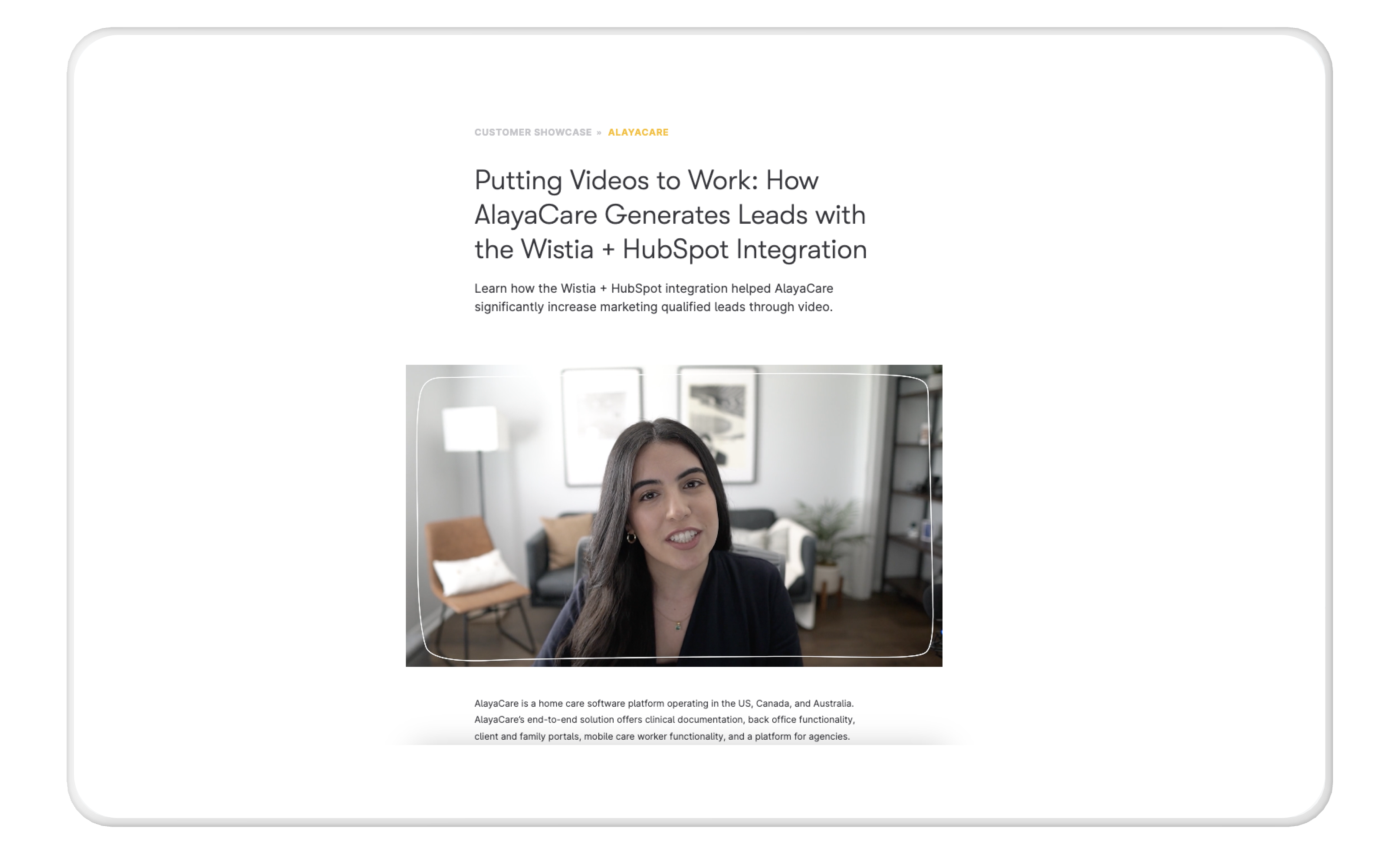
- The case study uses an interview-style video format where the Wistia team takes a deep dive into the challenges their customer, AlayaCare, faced and how Wistia’s integration helped them succeed. Given that the format is interview style, it builds instant credibility in the eyes of future prospects as they can clearly relate to the problems.
- By using a video-based format to deliver a case study, Wistia very cleverly showcases the ways in which a business can use its tool. When your sales reps share such snippets, it’s easy for them to convert a prospect!
- The case study also comes with a written format that offers the right amount of details, such as the problem, the solution, and the result, so that the reader can jump into sections that are most important to them.
Shopify
Another example of a stellar case study comes from Shopify—a complete commerce platform that lets people start, grow, and manage their businesses. For businesses looking to enhance their online presence, there are also various customizable blog themes for Shopify stores, which can further elevate their content strategy.
Called ‘Founder Stories, ’ Shopify offers both text-based and video-based case studies that are unique and instantly connect their products to new entrepreneurs and their challenges.
This case study is about a customer who found a market gap and launched a toy brand.
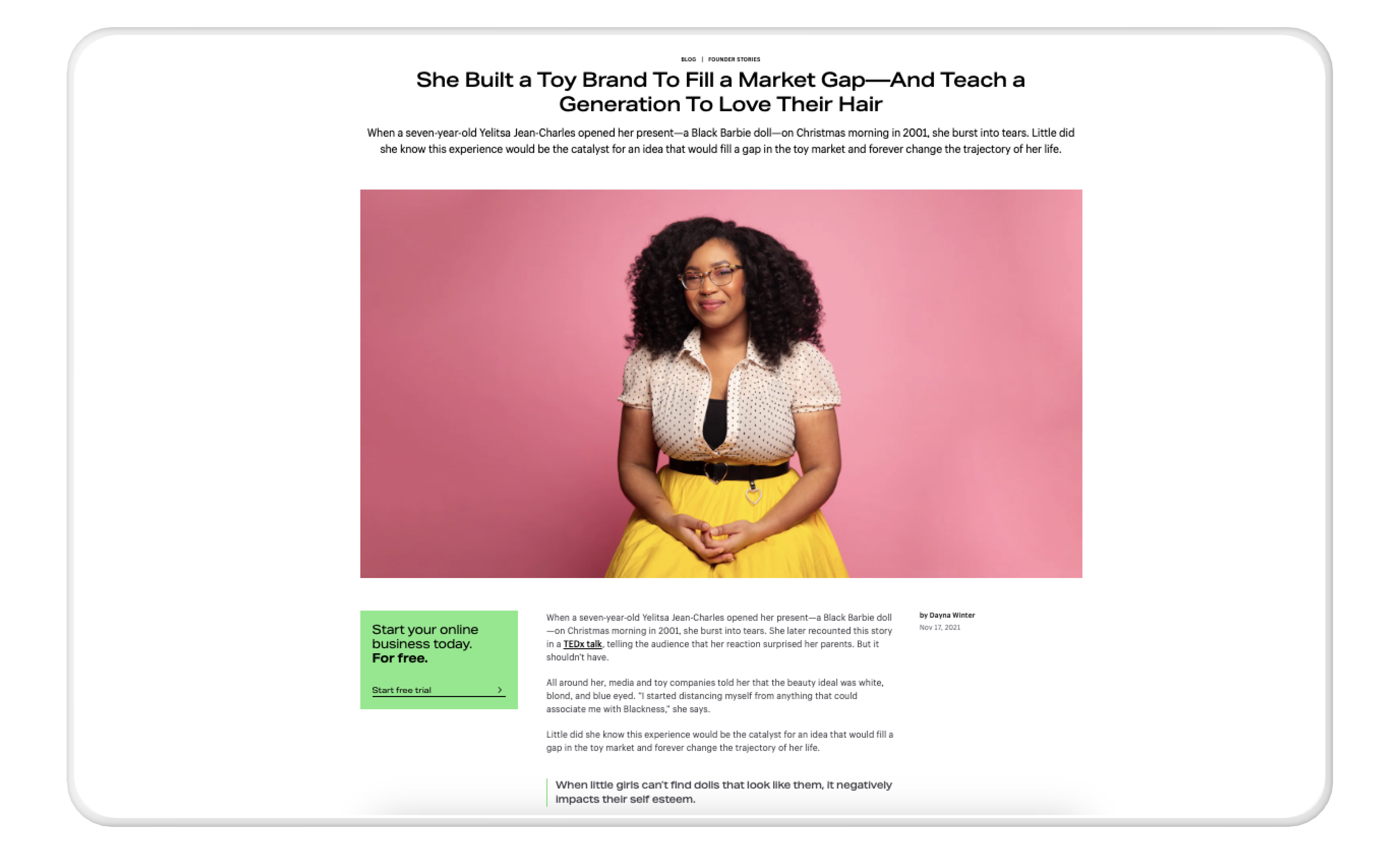
Things that stand out in this case study:
- This style of case study follows the storytelling method, which allows readers to empathize with the problem, remember Shopify’s product offering as well as build a stronger connection with their brand.
- If you’ve followed the company for a while, you’ll know that Shopify is all about championing their customer’s success; the product is usually secondary to the conversation demonstrated in this case study.
- Instead of merely stating numbers and outcomes, this approach provides context for the results achieved and the impact Shopify had on the customer's business, adding depth and authenticity to this case study.
Qwilr
And when discussing impressive case studies, how can we not mention some of our own? Our exceptional sales proposal software helps businesses empower customers to create proposals in minutes, not hours, using our variety of business proposal templates that fit whichever sales methodology you're using.
When Law Squared approached us, they wanted to reinvent their sales process to create an unrivaled customer experience. This in-depth case study discusses how the company achieved favorable results using Qwilr.
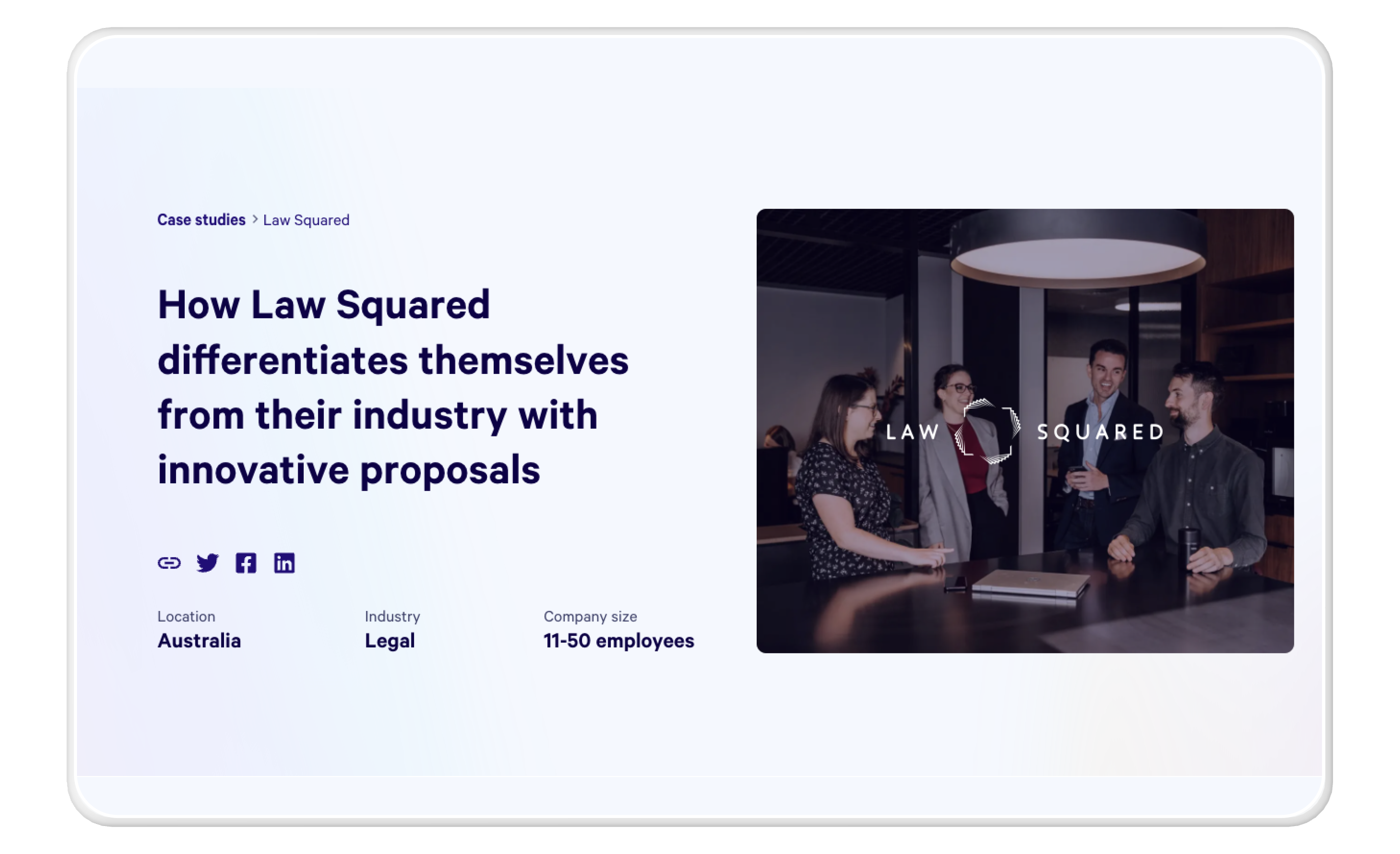
Things that stand out in this case study:
- The case study sets the stage quickly by stating the key results and executive summary early on. This tactic works like a charm for busy sales leaders who value results more than anything.
- The written case study follows the challenge-solution-impact structure, which effectively nails down the buyer’s experience and satisfaction, in turn displaying value in a way that impacts future customers.
- The use of GIFs cleverly showcases the product and its usage.
Making the most of your case studies
Think of the number of times you’ve scouted reviews and testimonials before buying a product that you’ve been eyeing. These reviews and testimonials provide a sense of security and help you see how the product has helped customers in the same industry and have similar pain points as yours.
A case study is no different and is hard proof of why you are worthy of a prospect’s business.
Investing in creating a case study is evergreen sales enablement content that will work for your business over time. Shared by both your sales and marketing teams, they’ll help you impress more prospects and demonstrate your ability to deliver exactly what you’ve promised.
About the author

Brendan Connaughton|Head of Growth Marketing
Brendan heads up growth marketing and demand generation at Qwilr, overseeing performance marketing, SEO, and lifecycle initiatives. Brendan has been instrumental in developing go-to-market functions for a number of high-growth startups and challenger brands.
FAQs
To begin a case study, it is important to provide a concise and engaging introduction that outlines the context, problem, or situation being examined. Start by briefly describing the relevant background information and key stakeholders involved in the case.
This sets the stage for the rest of the study and helps the reader understand the significance of the issues being explored.
When presenting a case study, the focus should be on sharing comprehensive information and insights rather than adhering strictly to a specific word count. The length of a case study can vary depending on the complexity of the subject matter and the depth of analysis required.
Generally, a case study is around 500 to 1500 words in length but may vary with style and format.
A good case study is characterized by a well-defined problem or challenge that is relevant and significant to the field. It should offer a thorough analysis of the situation supported by reliable data and evidence.
Additionally, a strong case study provides clear and actionable insights, showcasing the problem-solving process and its outcomes while also being effectively structured and engaging for the readers.
